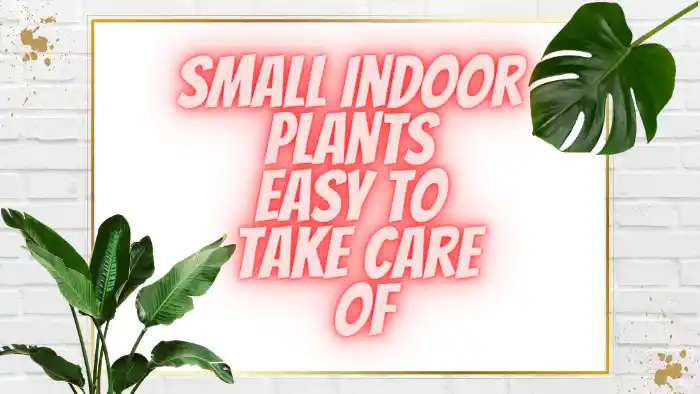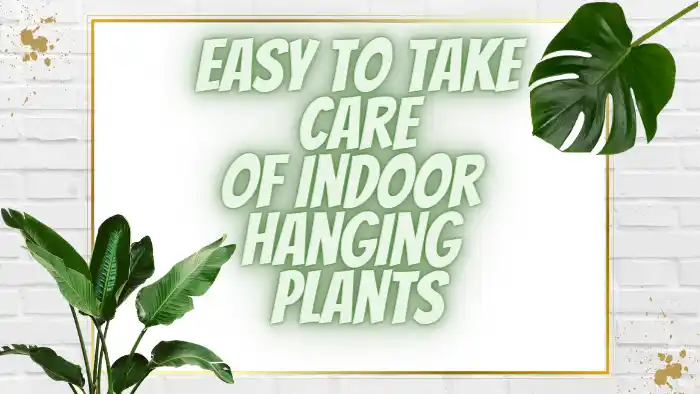Indoor plants can be a great way to bring life, color, and texture into your home. But how do you choose the right type of plant for your space? You want something that is easy to take care of and won’t require too much work. Big indoor plants are a great option if you’re looking for something that can liven up your living space with minimal effort. Not only do they look great, but they also help clean the air in your home.
Pros:
- Big indoor plants are aesthetically pleasing and can bring life to any space.
- They don’t require much effort to maintain and are low-maintenance.
- They help purify the air by filtering out toxins and improving air quality.
- These plants can help reduce stress levels, improve focus and productivity, as well as boost moods.
- They take up less space than outdoor plants, making them ideal for those with limited space indoors.
Cons:
- Big indoor plants require more water and sunlight than smaller ones, so they need to be monitored frequently to make sure they stay healthy and vibrant.
- If not cared for properly, they could spread dust particles or other allergens in your home environment if not regularly cleaned.
Big Indoor Plants
Indoor plants are a great way to add life, vibrancy, and color to any home or office. Big indoor plants provide an even greater impact, as they can be seen from further away and fill up larger spaces. Not only do big indoor plants look great, but they don’t have to be difficult to take care of either.
If you’re looking for big indoor plants that are easy to take care of, look no further! The snake plant (Sansevieria trifasciata) is one of the most popular houseplants available because it’s so easy-care and tolerant. It has long, strappy leaves which can reach up to four feet in length!
Benefits of Big Indoor Plants
Indoor plants are wonderful for the home or office. Big indoor plants not only create an impressive aesthetic, but they can also provide a number of benefits to both mental and physical health. Not only are big indoor plants easy to take care of, but their presence can help reduce stress levels, improve air quality, and even boost creativity.
For those who want to bring some greenery into their space without requiring too much effort or maintenance, big indoor plants can be an attractive option. The larger size is especially appealing because it allows for more coverage in a room without having to purchase several smaller plants.
Taking care of large indoor plants is relatively straightforward and generally requires minimal effort – making them great for those with busy lifestyles who still want to reap the rewards of owning house plants.
Types of Big Indoor Plants
Big indoor plants add beauty and a touch of nature to any home or office. However, choosing the right ones can be tricky. When looking for the perfect big indoor plant, there are several types to choose from that are easy to take care of.
One type of big indoor plant is a palm tree. Palms come in many sizes and shapes and can fill up an entire corner of a room.
They need bright light but do not require direct sunlight, which makes them perfect for indoors. Also, they only need to be watered every two weeks or so and fertilized twice a year making them low-maintenance plants.
Another type of big indoor plant is the Fiddle Leaf Fig Tree. This tall tree grows well in bright indirect light with regular watering and occasional fertilizer feedings once every few months throughout the growing season.
How to Care For Big Indoor Plants
Indoor plants can bring room to life, especially when they are big. If you want to make an impression with your indoor plants, then you should consider caring for big indoor plants. Taking care of large indoor plants is easier than it may seem, and when done correctly, these beautiful additions will improve the look of any home or office.
When looking for big indoor plants to bring into your home, make sure to choose ones that thrive indoors in your climate.
Some easy-to-care-for varieties include Dracaena marginata (dragon tree), Ficus elastica ‘Robusta’ (rubber plant), and Sansevieria trifasciata (snake plant). All of these require minimal maintenance but can have a great impact on any room.
Tips for Keeping Big Indoor Plants Healthy
In recent years, the popularity of big indoor plants has been on the rise. Whether you’re a gardening novice or an experienced green thumb, having a few large potted plants inside your home can provide a host of benefits.
Not only do they bring life to spaces that may otherwise be dull and lifeless, but they also have great air-filtering properties. With proper care and attention, big indoor plants can stay healthy and look great for years to come.
Here are some tips to help keep them in top condition:
First off, make sure that your big indoor plant is getting enough light – this is crucial to its health and longevity. Place it by a large window if possible or consider investing in grow lights if natural sunlight isn’t readily available in your home.
Troubleshooting Common Problems of big indoor plants
Big indoor plants can add a welcome touch of green to any home or office. But taking care of these large indoor plants can often present challenges for all but the most experienced gardening aficionados. Fortunately, troubleshooting common problems with big indoor plants is relatively easy and requires only minimal effort.
Not enough light, over-watering, and pests are three of the most frequent issues gardeners encounter when growing large houseplants. To prevent inadequate lighting from becoming a problem, be sure to place the plant in an area that receives bright indirect sunlight for several hours each day.
Over-watering is just as detrimental as not providing enough water; allowing the soil to dry between watering sessions so it does not become too soggy and suffocate plant root systems.
Conclusion
Big indoor plants are a great way to spruce up any room and add a bit of extra life to your home. They are also incredibly easy to take care of, requiring minimal effort and time.
Not only do they provide beauty and clean air, but they can also be used as natural humidifiers and even noise absorbers. With so many options available, there is sure to be a big indoor plant that is perfect for you!
Frequently Asked Questions
What are the benefits of growing plants indoors?
Growing plants indoors has many benefits. First, it allows you to bring a bit of nature into your home. Plants can add a touch of greenery and life to any indoor space, making it more inviting and enjoyable.
Second, growing plants indoors can help improve air quality in the home by filtering out pollutants and increasing oxygen levels.
This can be especially beneficial if you suffer from allergies or asthma since it will reduce the amount of dust and other allergens in the air.
Finally, growing plants indoors is an excellent way to relax and de-stress. Taking care of plants can be very therapeutic, as it requires patience, attention to detail, and a bit of creativity. Plus, watching your plants grow is incredibly rewarding!
How do I take care of my plants indoors?
Taking care of houseplants indoors is a great way to bring life and beauty into your home. Here are some tips for taking care of your plants:
First, make sure your plants get enough light. Most plants need at least 6-8 hours of sunlight per day, so if you don’t have a sunny spot in your home, you may need to invest in a grow light. Additionally, rotate your plants every few weeks so that all sides get equal exposure to the sun.
Second, water your plants regularly but not too much. Overwatering can cause root rot and other issues, so make sure the soil is dry before giving it more water. If you’re not sure how often to water your plant, stick your finger in the soil – if it feels dry an inch below the surface, it’s time to water.
What are some of the common problems that plants experience in indoor environments?
Indoor plants can suffer from a variety of issues due to their environment. One common problem is inadequate light, which can cause leaves to become yellow or pale and stunt growth.
Another problem is overwatering, which can lead to root rot and fungal diseases. Finally, indoor plants may also be susceptible to pests such as aphids or spider mites, which can cause damage to the leaves and stems of the plant.
To prevent these problems, it’s important to ensure that your indoor plants get adequate light and water. You should also regularly inspect them for signs of pests and treat them accordingly if any are found. Additionally, you should avoid overcrowding your plants in one area as this can limit air circulation and create an environment suitable for pests.
What types of plants does Big Indoor Plants Easy to Take Care Of offer?
These include succulents, cacti, air plants, and ferns. Succulents come in a variety of shapes and sizes and require minimal watering.
Air plants are epiphytes, meaning they don’t need soil or fertilizer to grow; they simply need bright indirect light and occasional misting. Ferns are also low-maintenance houseplants that thrive with regular watering and indirect sunlight.
How often should I water my plants?
How often you should water your plants depends on the type of plant, the size of the container, and the environment in which it is placed. Generally speaking, most plants need to be watered once every week or two. However, if you’re dealing with a particularly thirsty plant like a fern or succulent, you may need to water it more frequently.
When watering your plants, pay attention to their soil. If it feels dry and crumbly when touched, then it’s time to water. If the soil feels damp or wet, wait until it dries out before watering again. Also, consider the temperature and humidity of your home as this can affect how quickly the soil dries out.
For instance, if you live in a warm climate with high humidity levels, you may need to water more often than someone living in a cooler climate with low humidity levels.
How do I clean my plants?
Cleaning your plants is an important part of plant care and can help them stay healthy and vibrant. There are several ways to clean your plants, depending on the type of plant you have.
For foliage plants, you can use a damp cloth or sponge to gently wipe away dust and dirt that has accumulated on the leaves. This will help keep the leaves looking shiny and healthy. You may also want to mist the leaves with water from time to time as this helps remove any dust particles that may be stuck on them.
For flowering plants, you should use a soft brush or cotton swab dipped in lukewarm water to gently remove any dirt or debris from the petals. This will help keep the blooms looking beautiful and vibrant. Additionally, it’s important to deadhead flowers regularly so they don’t become overcrowded and start to die off prematurely.
I am a Horticulture graduate and passionate gardener with expertise in identifying, growing, and caring for plants, trees, and seeds. With a focus on sustainable practices, they aim to promote environmental awareness and appreciation for the natural world.








